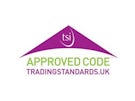In an age of soundbites and sensationalism, the UK property market—particularly here in Warrington—often finds itself misconstrued by general narratives.
While we cannot ignore the challenges of increasing mortgage rates and shifting buyer preferences, it is vital to appreciate the broader context to understand what’s happening in the Warrington property landscape.
The UK housing market is currently at a crossroads, characterised by its lowest house price growth since 2012. High mortgage rates are making a significant dent in market activity, affecting everything from buyer demand to the volume of property sales.
Warrington properties are still selling but not at the rate or level they were in 2021. Therefore, correctly pricing your property for sale cannot be underestimated. Let me explain why, then the reasons behind the current state of play nationally, and finally, the exact story of what is happening now (and in the future) in Warrington.
𝗧𝗵𝗲 𝗜𝗺𝗽𝗼𝗿𝘁𝗮𝗻𝗰𝗲 𝗼𝗳 𝗖𝗼𝗿𝗿𝗲𝗰𝘁𝗹𝘆 𝗦𝗲𝘁𝘁𝗶𝗻𝗴 𝗮𝗻 𝗔𝘀𝗸𝗶𝗻𝗴 𝗣𝗿𝗶𝗰𝗲 𝗳𝗼𝗿 𝗬𝗼𝘂𝗿 𝗪𝗮𝗿𝗿𝗶𝗻𝗴𝘁𝗼𝗻 𝗛𝗼𝗺𝗲
Putting your Warrington property on the market at too high an asking price can significantly deter potential buyers and limit the number of people who come to view it. Buyers often have a budget range in mind, and if your property is priced above comparable homes in the area, it’s likely to be filtered out of search results and go unnoticed.
Even if the property gets some attention, the inflated price can send a message that you’re not serious about selling or unwilling to negotiate. This can result in your property languishing on the market, which could necessitate future price reductions.
Over time, a stale listing may become stigmatised, leading buyers to suspect that something must be wrong with the property beyond its high price.
Thus, setting a realistic, market-aligned asking price is crucial for attracting a broad pool of qualified buyers and facilitating a quicker, more lucrative sale.
𝗧𝗵𝗲 𝗜𝗺𝗽𝗮𝗰𝘁 𝗼𝗳 𝗛𝗶𝗴𝗵 𝗠𝗼𝗿𝘁𝗴𝗮𝗴𝗲 𝗥𝗮𝘁𝗲𝘀
High mortgage rates are putting a strain on the housing market. The latest data shows a significant fall in demand from buyers — about a third less than the average during the same period over the last five years (2018-2022). While there is a greater number of homes available for sale now compared to the previous two years, fewer homes are selling.
Nationally, this year, the number of properties sold stc year to date has been 750,113. That same sales figure to the end of August 2022 was 903,799 (a 17% decrease), and to the end of August 2021, 1,020,439 (a 26.49% decrease). As you would expect, mortgage-backed sales are particularly hit hard, expected to be just over a quarter lower than last year. Cash sales are expected to be less affected, but the overall market activity remains sluggish.
𝗥𝗲𝗴𝗶𝗼𝗻𝗮𝗹 𝗗𝗶𝘀𝗽𝗮𝗿𝗶𝘁𝗶𝗲𝘀
An interesting aspect of the current housing market is the distinct regional disparity. Looking at the £ per square foot of the sales agreed (not completed) of the August 22 sales vs. August 23.
East of England -4.85%
North East -3.71%
South East -2.99%
Wales -2.02%
East Midlands -1.72%
Yorkshire and The Humber -0.85%
West Midlands -0.62%
North West -0.54%
Outer London -0.44%
Inner London -0.13%
South West 2.85%
Scotland 3.88%
In the East of England (as a region), house prices have fallen by just under 5% over the last year. Conversely, there’s been a 3.8% increase in house prices in Scotland.
𝗙𝗶𝗿𝘀𝘁-𝘁𝗶𝗺𝗲 𝗕𝘂𝘆𝗲𝗿𝘀 𝗮𝗻𝗱 𝗔𝗳𝗳𝗼𝗿𝗱𝗮𝗯𝗶𝗹𝗶𝘁𝘆
High mortgage rates are affecting first-time buyers disproportionately. In 2021/2, low mortgage rates made buying a Warrington home cheaper than renting, spurring a wave of first-time buyers. However, continuing with the regional theme, with current mortgage rates soaring above 5%, renting has now become cheaper on average than buying for a first-time buyer property in London, the South and parts of the Midlands, even despite high rental growth in recent years (although it is still cheaper to buy than rent in the North, Wales and Scotland).
𝗧𝗵𝗲 𝗥𝗼𝗹𝗲 𝗼𝗳 𝗪𝗮𝗴𝗲 𝗚𝗿𝗼𝘄𝘁𝗵
Despite the bleak outlook, there is a silver lining. Faster wage growth is making housing more affordable. Average wage rises of 8.2% over the past year are helping to balance out the effect of 22.56% higher mortgage payments on first-time buyers’ household incomes (up from 31.9% in Q2, 2022 to 39% in Q2, 2023). As a result, the gap between house prices and earnings is closing, and affordability is expected to improve by 10% over 2023.
𝗙𝗼𝗰𝘂𝘀 𝗼𝗻 𝗪𝗮𝗿𝗿𝗶𝗻𝗴𝘁𝗼𝗻
In 2021, an average of 381 properties were coming onto the market in the Warrington area per month, whilst there was an average of 388 properties selling monthly. Therefore, there was an average net decrease of 7 properties per month in the Warrington area to buy (hence, the Warrington property market was doing very well).
In 2022, things started to change. An average of 407 properties were coming onto the market in the Warrington area per month, yet there was only an average of 342 properties selling each month. There was an increasing supply of properties (average net increase of 65 properties each month), but demand (property sales) did not follow suit. Consequently, saleability rates dropped as Warrington homeowners only had an 84.0% chance of selling.
To the end of August 2023, there has been a further increase in new properties coming on the market (an average of 419 properties coming onto the market in the Warrington area per month). Yet, demand has dropped further as only an average of 313 properties have been selling per month, meaning there has been an average net increase of 106 properties per month in the Warrington area to buy. Consequently, saleability rates have continued to drop even further as Warrington homeowners have only had a 74.7% chance of selling this year.

Warrington = WA1-WA5.
𝗧𝗵𝗲 𝗖𝘂𝗿𝘀𝗲 𝗼𝗳 𝗢𝘃𝗲𝗿𝘃𝗮𝗹𝘂𝗶𝗻𝗴 𝗮𝗻𝗱 𝗛𝗼𝘄 𝗶𝘁 𝗖𝗼𝘂𝗹𝗱 𝗖𝗼𝘀𝘁 𝗬𝗼𝘂 𝗬𝗼𝘂𝗿 𝗗𝗿𝗲𝗮𝗺 𝗛𝗼𝗺𝗲
I hope I have proven to you why it is sensible to put your property on the market at a realistic asking price from day one and not be tempted to overcook the initial asking price. You only have one chance of a property being a new instruction (and all the excitement and focus that creates).
Overvaluing homes is becoming a concerning trend in Warrington, often led by estate agents more interested in listing as many properties as possible rather than making actual sales. Such overvaluation harms homeowners, tempting them with unrealistically high prices only to advise price reductions later. The problem is your dream home might have sold by then.
While listing your Warrington home at a price 10-20% higher than its actual value might seem tempting, this strategy often backfires. Research from Which shows that overpriced properties linger on the market and eventually sell for less than those priced correctly from the start.
Additionally, some estate agencies incentivise their staff to list properties rather than sell them, exacerbating the issue. As the Warrington property market stabilises, setting a realistic asking price is crucial for attracting serious buyers and achieving a timely sale.
𝗧𝗵𝗲 𝗙𝘂𝘁𝘂𝗿𝗲 𝗼𝗳 𝘁𝗵𝗲 𝗪𝗮𝗿𝗿𝗶𝗻𝗴𝘁𝗼𝗻 𝗛𝗼𝘂𝘀𝗶𝗻𝗴 𝗠𝗮𝗿𝗸𝗲𝘁
The immediate future doesn’t hold much promise for dramatic house price growth in Warrington, nor is it expected to fall dramatically (read my previous articles on this).
However, factors like an ageing population, more flexible work arrangements, a strong labour market, and high immigration rates could stir market activity in the next few years. Mortgage rates are also expected to fall below 5% later this year, although the impact may only be felt in the first half of 2024.
The UK housing market is navigating through turbulent waters with high mortgage rates and a severe slowdown in house price growth. However, the emerging trend of faster wage growth could be a game-changer, making housing more affordable in the long term.
Furthermore, anticipated drops in mortgage rates and sociodemographic changes are expected to drive market activity in the coming years. All eyes will be on how these multiple forces will shape the UK housing market in the foreseeable future.
Buyers and sellers can make more informed decisions by understanding these trends and potential future shifts. The market might be under strain now, and homeowners need to be realistic with their pricing; these indicators suggest we might be heading towards a more balanced and accessible market in the coming years.











